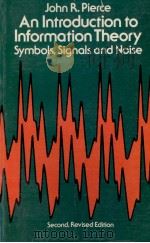《NETWORK THEORY:AN INTRODUCTION TO RECIPROCAL AND NONERCIPROCAL CIRCUITS》
| 作者 | 编者 |
|---|---|
| 出版 | PRENTICE-HALL |
| 参考页数 | 477 |
| 出版时间 | 1964(求助前请核对) 目录预览 |
| ISBN号 | 无 — 求助条款 |
| PDF编号 | 812262728(仅供预览,未存储实际文件) |
| 求助格式 | 扫描PDF(若分多册发行,每次仅能受理1册) |
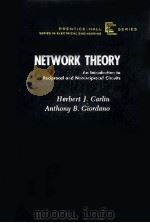
Introduction1
Basic Network Postulates1
Notation7
Further Readings10
Chapter One—Relation between Matrix Algebra and Network Topology11
1.1Introduction11
1.2 The Kirchhoff Current Equations;Topology of Trees12
1.3 Determinants17
1.4 Matrix Algebra and Linear Dependence20
1.5 Solution of the Current Junction Equations;Branch-Node Incidence Matrix32
1.6 Relation between Branch and Mesh Currents;Branch-Mesh Incidence Matrix35
1.7 The Kirchhoff Voltage Equations;Duality43
1.8 Multiply Connected Networks46
Problems 1.1-1.3547
Further Readings55
Chapter Two—Mesh and Nodal Analysis of Networks56
2.1Branch Current-Voltage Relations;Branch Impedance Matrix56
2.2Mesh Analysis63
Mesh Excitation63
Mesh Impedance Matrix64
2.3Solution of the Mesh Equations69
Solution for Nonsingular ZM69
Solution for Singular ZM72
2.4Nodal Analysis75
Nodal Admittance Matrix75
Nodal Admittance Parameters by Inspection81
2.5 Solution of Nodal Equations85
2.6 Equivalent Circuits without Transformers87
2.7 Measurement of the Elements of ZM and Z?89
2.8 Measurement of the Elements of YJ and Y?94
Problems 2.1-2.2397
Further Readings106
Chapter Three—Network Transformations and Equivalences107
3.1Change of Variables107
3.2 General Node-Pair Analysis109
3.3 The Application of Cut-Sets to Network Analysis113
3.4 Accessible Terminal Pairs or Ports116
3.5 Network Interconnections120
3.6Further Generalization of the Interconnection Equations130
General Series Interconnection130
Series Ring Circuits136
3.7Elimination of Meshes and Node Pairs138
Matrix Reduction Equations138
Campbell's Reduction Formula139
3.8 Generalized Form of Thèvenin's Theorem for an n-port144
3.9 Elimination of Variables in Interconnected Networks146
3.10Equivalences for Symmetrical 2-Port Networks148
The 2-Ports:T,П,Lattice,and Bridged-T,148
Measurement of Immittance Parameters156
3.11 Properties of the Symmetric Lattice157
3.12 Bartlett Bisection Theorem161
3.13 Equivalent 1-Port Networks167
3.14Analysis of Ideal Transformer Networks172
The 2-Winding Ideal Transformer172
Interconnection with 2-Winding Ideal Transformers176
Multi-winding Ideal Transformers179
3.15 Mesh Analysis of General Ideal Transformer Networks182
3.16Network Transformations with Ideal Transformers190
Impedance Matrix Diagonalization and Synthesis190
Energy Relations in an n-Port199
Problems 3.1-3.48207
Further Readings221
Chapter Four—The Scattering Matrix222
4.1Application of Scattering Parameters222
4.2Scattering Relations for a 1-Port224
Definition of Scattering Variables224
Physical Interpretation of Scattering Variables227
Generation of Incident and Reflected Voltages230
4.3Power Relations in a 1-Port232
Power Transfer and Return Loss232
Constant Power,Variable Phase 1-Port;Low-Pass Filter234
4.4Scattering Representation of n-Ports237
Derivation of the Scattering Matrix237
Scattering-Impedance Relations241
Nonnormalized Scattering Matrix243
4.5Examples of Scattering Matrix Calculations244
Series Element 2-Port244
Ideal Transformer 2-Port245
Hybrid Coil Circuit246
Scattering Immittance Relations for a 2-Port249
4.6Scattering Computations in Match-Terminated Networks250
All-Pass Symmetrical Lattice254
Image Impedance Parameters255
4.7Scattering Computations with General Terminations257
Balanced Bridge Circuit258
Broad-Band Matching Transformer261
4.8Scattering Formulation of Power Transfer in Passive n-Ports269
Unitary Scattering Matrix273
Gain-Bandwidth in a Matched Constant Resistance 2-Port274
4.9Scattering Properties of Lossless n-Ports275
Lossless 2-Port275
Lossless 3-Port Networks277
Lossless Matched 4-Ports;Biconjugate Networks281
4.10Linear Transformation of the Scattering Matrix283
Orthogonal Transformations and Matrices283
Eigenvalues and Eigenvectors288
Frequency-Invariant,Lossless Scattering Matrices291
Direct Realization of a Unitary,Symmetric Scattering Matrix295
Matched Lossless,Frequency Invariant n-Ports298
4.11Transfer Scattering Coefficients300
Impedance Transfer Coefficients,(ABCD)300
Transfer Scattering Matrix302
Transfer Formalism for a 2n-Port305
Cascaded 2-Ports308
Resistive Attenuator311
4.12Networks Cascaded on an Image and Iterative Basis313
Use of Image Parameters313
Periodic Structures(Iterative Cascade)319
4.13Complex Normalization326
Properties of the Normalized Scattering Matrix326
Power Transfer from Complex Generator to Complex Load331
Conjugate Image Impedances—Intrinsic Loss335
General Form of Tunnel Diode Amplifiers338
Problems 4.1-4.32344
Further Readings349
Chapter Five—Nonreciprocal Networks350
5.1Circuit Properties of the Gyrator350
Lorentz Reciprocity and the Gyrator350
Mesh Analysis with Gyrators355
5.2Representation of a Nonreciprocal Impedance Matrix359
Properties of the Impedance Matrix of a Passive Network359
Synthesis of a Nonreciprocal Impedance Matrix362
Complex Ideal Transformers367
Equivalent Circuit for General Passive Nonreciprocal 2-Port370
5.3 Lossless Nonreciprocal Impedance Matrices373
5.4Scattering Properties of Nonreciprocal Networks377
Nonreciprocal Lossless 2-Port378
Matched Lossless 3-Port(The Circulator)379
Nonreciprocal Lossless 4-Port;4-Port Matched Power Divider380
5.5Some Typical Applications of Nonreciprocal Isolating Networks384
Lossless Duplexer Utilizing a Circulator385
Duplexer with Loss389
One-Way Line391
Frequency Selector Network391
Band-Pass Filter with Interactions Suppressed392
Hall Plate Nonreciprocal Devices:Gyrator,Isolator393
Hall Plate Networks:Gyrator,Isolator,Circulator399
5.6Equivalent Circuits for Nonreciprocal Isolating Networks404
Equivalent Circuit for One-Way Line404
Equivalent Circuit for 3-Port Circulator406
4-Port Circulator407
5.7Representation of Nonreciprocal Scattering Matrices411
Removal of Degeneracy by Gyrator Extraction412
4-Port Circulator Without Z or Y416
5.8 Removal of Degeneracy by Complex Transformer Interconnections418
5.9Direct Synthesis of a Non symmetric Orthogonal Scattering Matrix429
Minimum Number of Gyrators for n-Port Circulator436
Direct Synthesis of 3-Port Circulator438
5.10Direct Realization of a Complex Scattering Matrix440
Synthesis of Nonsingular S440
Synthesis when S is Singular445
5.11Invariants of a Nonreciprocal Network Under Lossless Reciprocal Imbedding446
Invariants of a Nonreciprocal 2-Port446
Invariants of a Nonreciprocal n-Port451
Problems 5.1-5.42455
Further Readings463
Index465
1964《NETWORK THEORY:AN INTRODUCTION TO RECIPROCAL AND NONERCIPROCAL CIRCUITS》由于是年代较久的资料都绝版了,几乎不可能购买到实物。如果大家为了学习确实需要,可向博主求助其电子版PDF文件(由 1964 PRENTICE-HALL 出版的版本) 。对合法合规的求助,我会当即受理并将下载地址发送给你。
高度相关资料
-
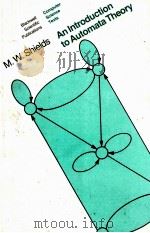
- AN INTRODUCTION TO AUTOMATA THEORY
- 1987 BLACKWELL SCIENTIFIC PUBLICATIONS
-
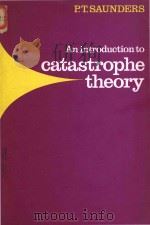
- An introduction to catastrophe theory
- 1980 Cambridge University Press
-
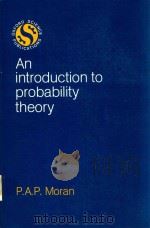
- AN INTRODUCTION TO PROBABILITY THEORY
- 1968 CLARENDON PRESS·OXFORD
-
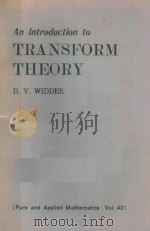
- An introduction to transform theory
- 1971 Academic press
-
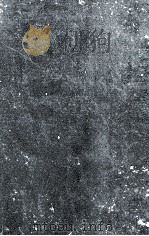
- AN INTRODUCTION TO SEMIGROUP THEORY
- 1976 ACADEMIC PRESS INC.
-

- Linguistic Reconstruction An Introduction to Theory and Method
- 1995 OXFORD UNIVERSITY PRESS
-

- AN INTRODUCTION TO HOMOTOPY THEORY
- 1953 CAMBRIDGE UNIVERSITY PRESS
-
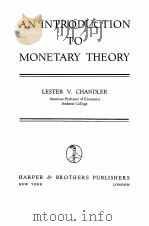
- AN INTRODUCTION TO MONETARY THEORY
- 1940 HARPER AND BROTHERS PUBLISHERS
-

- AN INTRODUCTION TO COMMUTATIVE ALGEBRA AND NUMBER THEORY
- 1999 NAROSA PUBLISHING HOUSE
-

- REASSEMBLING THE SOCIAL AN INTRODUCTION TO ACTOR-NETWORK-THEORY
- OXFORD UNIVERSITY PRRESS
-

- HUMAN MEMORY AN INTRODUCTION TO RESEARCH AND THEORY
- 1982 BROOKS/COLE PUBLISHING COMPANY
-
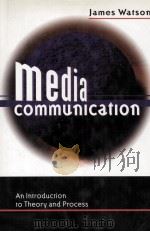
- Media Communication An Introduction to Theory and Process
- 1998 MACMILLAN PRESS LTD
提示:百度云已更名为百度网盘(百度盘),天翼云盘、微盘下载地址……暂未提供。➥ PDF文字可复制化或转WORD

